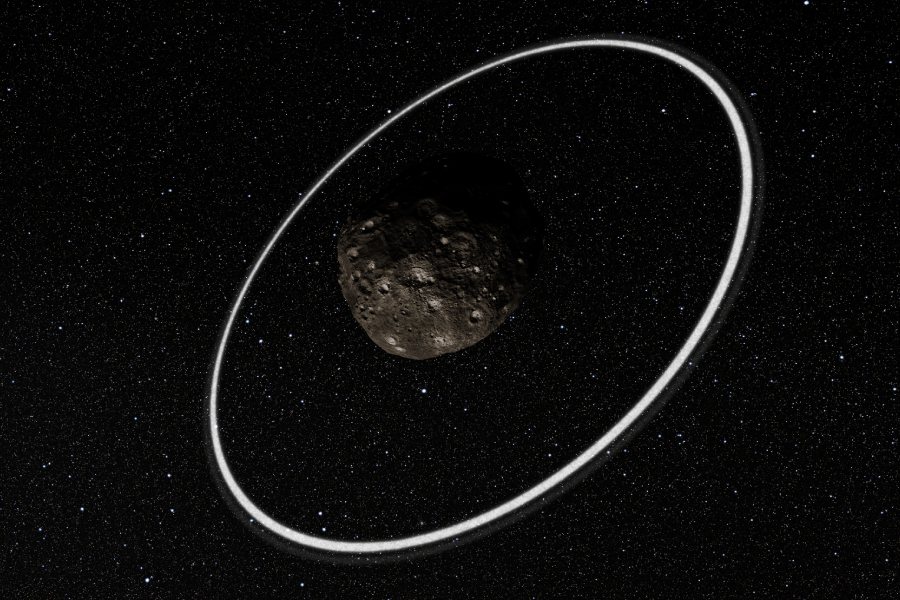Terrestrial planets, such as Earth, Mars, Venus, and Mercury, have long captivated our imaginations with their diverse landscapes and unique characteristics. While we often associate planetary rings with gas giants like Saturn, the question arises: can terrestrial planets have rings?
In this article, we’ll delve into the laws of gravity and closely examine the intriguing histories of planets like Earth. We’ll examine factors such as mass, composition, and orbital positions crucial for terrestrial planets to develop and maintain rings over vast periods in space.
As we explore the conditions for rings to endure without disintegrating, we’ll understand why rings have captured our imagination throughout history. Their enchanting symbolism mirrors our desire for connection with the cosmos, a longing that has persisted across cultures and time.

Can Terrestrial Planets Have Rings?
Terrestrial planets don’t have rings because they’re smaller and denser, lacking the gravitational pull needed to keep ice and dust particles in orbit over time. Unlike gas giants, which boast impressive ring systems made of ice and dust, terrestrial planets simply can’t hold onto such material.
Even though Earth’s Moon has a faint dust ring, it’s not classified as a proper planetary ring system. This is because of its different composition and how it formed.
Possible reasons: why don’t terrestrial planets have rings?
Unlike gas giants, terrestrial planets formed nearer to the Sun, where there wasn’t an abundance of icy materials like water and ammonia as in the outer Solar System where gas giants formed. The Sun’s intense heat vaporized these volatile ices.
This scarcity of icy material, crucial for ring formation, limits the formation of rings around terrestrial planets. Due to their stronger gravitational pull compared to gas giants, terrestrial planets tend to attract debris and particles closer to them.
This gravitational force can either tear apart these particles due to tidal forces or incorporate them into the planet itself. It prevents the accumulation of ring material.
Large moons like Saturn’s moon, Titan, play a vital role in shaping and replenishing ring systems. These moons gravitationally guide ring particles, preventing them from clumping together and hindering the formation of larger moons.
Furthermore, they contribute dust and debris to the rings through collisions and volcanic activity. The absence of large moons around terrestrial planets further reduces the possibility of ring formation.
Formation of Planetary Rings
In the process of forming a planetary system, bits of dust and debris that remain from the swirling disk of gas and dust, known as the protoplanetary disk, can gather around a planet. Additionally, collisions involving asteroids, comets, or moons orbiting the planet can add to the material in the ring system.
The Roche limit defines the boundary around a planet where the gravitational forces from the planet can tear apart a celestial body that ventures too close. When a moon or other celestial body crosses this limit, the intense tidal forces can break it apart, forming a ring system from the shattered fragments.
Saturn’s rings
Saturn’s rings provide a classic illustration of ring formation. Scientists suggest that these rings are mostly made up of water, ice, and dust, possibly originating from various sources.
The outer rings could be leftover fragments of moons that got too near Saturn’s Roche limit. Meanwhile, the inner rings might have formed due to collisions between moons or icy objects within the ring system.
Furthermore, Saturn’s biggest moons, such as Titan and Rhea, play a crucial role by exerting gravitational forces on the rings. These moons help shape the rings’ structure and stop them from merging to create larger moons.
Conclusion
The majestic rings of gas giants like Saturn, captivating as they are, arise from a specific set of conditions. So, can terrestrial planets have rings?
Terrestrial planets lack the necessary ingredients to form and sustain such magnificent structures. They lack abundant icy material, weaker gravity, and large moons required for ring formation.
By diving into the fascinating interplay of these factors, we gained a deeper appreciation for celestial formations within our Solar System. Each has its own unique characteristics and story to tell.
